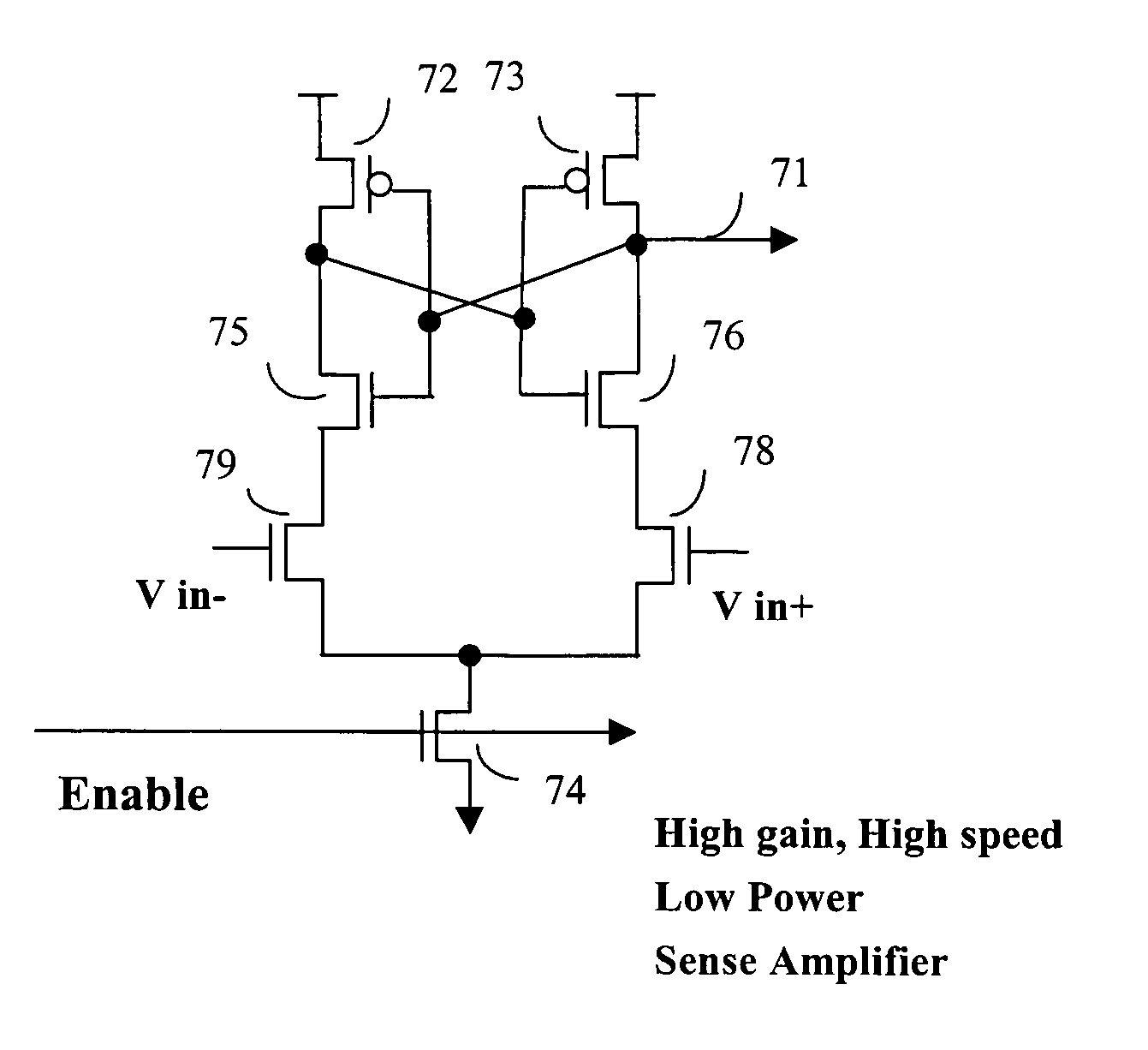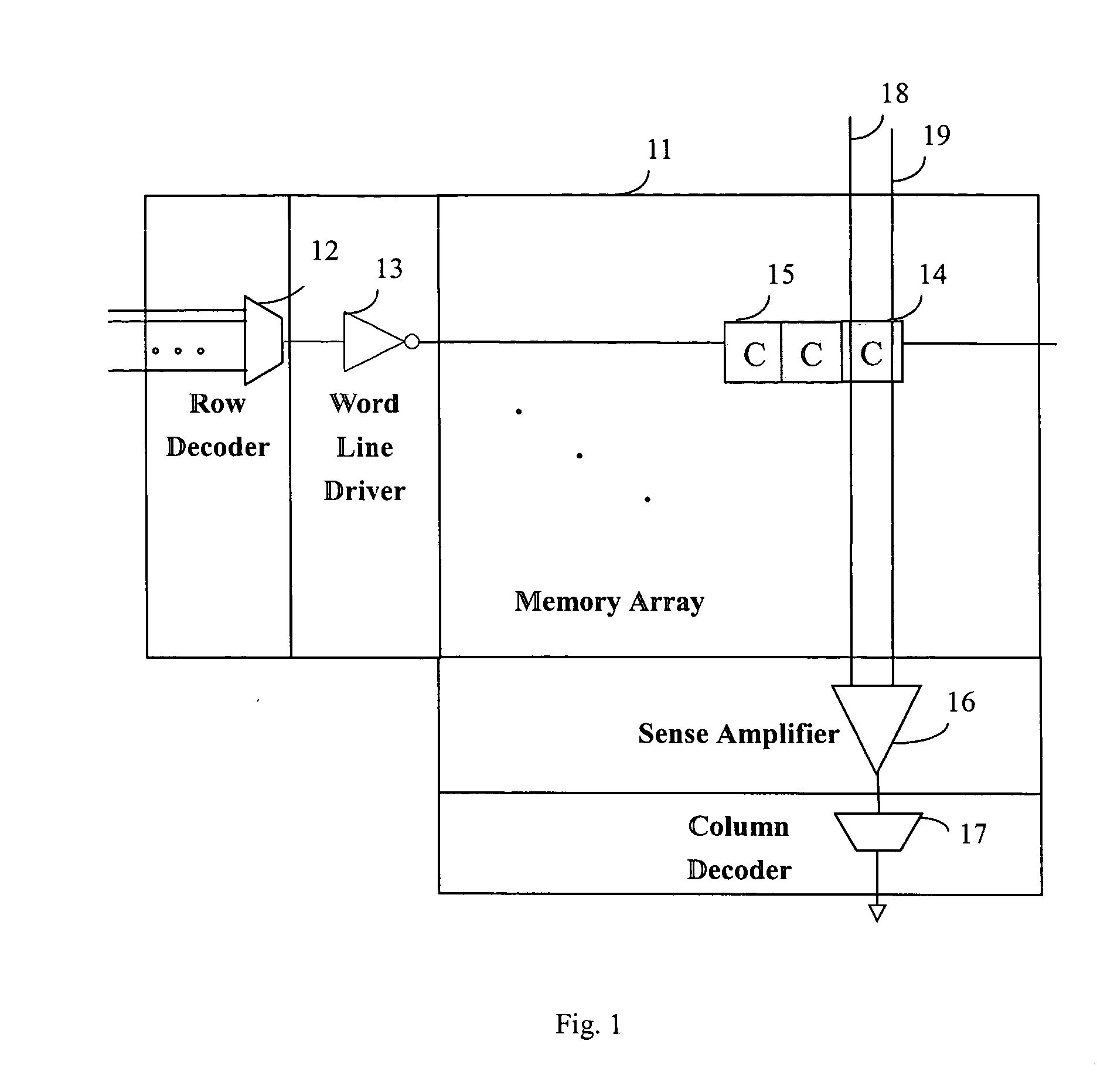Low power sensing scheme for the semiconductor memory
a low-power sensing and memory technology, applied in the field of semiconductor memory sensing schemes, can solve the problems of power dissipation, higher danger of failure in the sensing amplifier, and achieve the effects of reducing noise and power/ground bouncing, avoiding higher power dissipation, and reducing power/ground bouncing
- Summary
- Abstract
- Description
- Claims
- Application Information
AI Technical Summary
Benefits of technology
Problems solved by technology
Method used
Image
Examples
Embodiment Construction
[0029] In addition to the parasitic diode leakage current, there are two main factors consuming power in semiconductor memory circuits. The first one is differentiating the voltage between bit line and bit line-bar which are input into the sense amplifier. The other is the leak current caused by the overlapping of pre-charging and word line signal. The operation of charging and discharging the bit line and bit line-bar results in power consumption. The equation below shows the power consumption calculation. CL is the capacitive loading, f is the switching frequency which is equivalent to charging and discharging frequency, delta V is the magnitude of the voltage swing. These three factors dominate the power consumption of the memory data sensing.
P=CLΔV2×f
[0030] External noise coupled into the sense amplifier causes the sense amplifier to inadvertently switch from one output voltage potential to another output voltage potential. That is, the noise coupled into the sense amplifier c...
PUM
 Login to View More
Login to View More Abstract
Description
Claims
Application Information
 Login to View More
Login to View More - R&D
- Intellectual Property
- Life Sciences
- Materials
- Tech Scout
- Unparalleled Data Quality
- Higher Quality Content
- 60% Fewer Hallucinations
Browse by: Latest US Patents, China's latest patents, Technical Efficacy Thesaurus, Application Domain, Technology Topic, Popular Technical Reports.
© 2025 PatSnap. All rights reserved.Legal|Privacy policy|Modern Slavery Act Transparency Statement|Sitemap|About US| Contact US: help@patsnap.com



